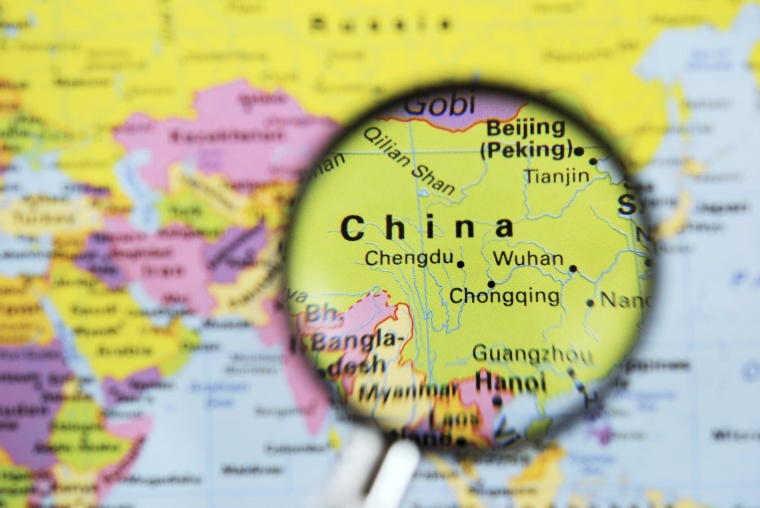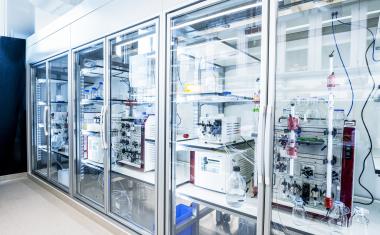Rising Chinese Investments in New Chemical Segments
China’s chemical industry originally focused primarily on basic chemicals, in line with the domestic needs of a developing economy and the lower technology requirements for the production of these materials. By now, China dominates the global market for many such chemicals – for example, the country accounts for about 55% of the global capacity for acetic acid, about 50% of the global carbon black capacity and about 45% of the global capacity for titanium dioxide. For many such commodity chemicals, China started out as a net importer, then built up domestic capacity and ended up being a major exporter.

Another segment with a strong early presence of Chinese players is that for fine chemicals – somewhat complex organic molecules that can however be sold on specification only rather than requiring application knowledge. Examples are Vitamin C (China share about 80%), selected agrochemicals such as glyphosate (China share about 58%) and active pharmaceutical ingredients such as ibuprofen, paracetamol and aspirin.
These are all chemicals which only require a limited level of technology and innovation. Customers generally know how to use them and thus do not expect application knowledge from the suppliers. Furthermore, these chemicals are produced in large volumes, thus allowing Chinese producers to benefit from strong economies of scale.
However, these factors also limit the profitability and the growth prospects of these materials. Indeed, many Chinese producers focusing on such chemicals struggle economically due to intense competition driven by overcapacity and slowing demand growth. Additional pressure comes from government initiatives to tighten environmental regulation.
“Some of the biggest Chinese chemical companies have recently expanded their activities into emerging segments.”
As a consequence, some of the biggest Chinese chemical companies have recently expanded their activities into emerging segments, in particular those related to the energy transition, but also other innovative areas.
Take Hengli, a polyester producer with the world’s largest capacity of PTA (purified terephthalic acid). The company is currently investing about €2.5 billion in a chemical park next to its petrochemical plant in Dalian, realizing that the rationale for further expansion in polyester is limited. The new park will focus on production of lithium battery separators, electrolytes for lithium-ion batteries, resin materials, degradable plastics and engineering plastics. According to Hengli's 2022 annual report, a 200 kt/a battery-grade dimethyl carbonate plant will be gradually put into production in 2023. With regard to lithium battery separators, the first line was already put into production in June.
Wanhua Chemical, the global leader in the production of MDI, arguably has a much stronger history in utilizing R&D to gain a competitive advantage. Still, the recent activities of the company massively expand its engagement in new and innovative chemical segments. For example, Wanhua acquired a producer of lithium battery materials followed by integration and establishment of a ternary materials project. In 2023, Wanhua plans to invest 3.34 billion renminbi (about €420 million) in battery material projects, a year-on-year increase of 174%. Wanhua also developed production capacity for beta ionone, a fragrance ingredient, and for polyamide 12 (PA, nylon), a high-end engineering plastic with a variety of different industrial applications.
Sheng Hong, a petrochemical and chemical fiber producer, will not only massively invest in the production of raw materials for lithium batteries but has also started several projects in the area of energy storage, such as a new energy storage battery and system integration project in Taizhou, Jiangsu with a total investment of 12 billion renminbi (about €1.5 billion).
Perhaps more surprisingly, Sinopec, China's largest oil company and basic chemical producer, is also moving into high-end chemicals. Of particular interest is the investment in photovoltaic-grade EVA (ethyl vinyl acetate), a material used in the production of solar panels. China currently needs to import a substantial share of the higher EVA grades required for this application. Another target segment is large tow carbon fibers, with applications in industrial projects including ones related to wind power, solar power, high-speed rail, and aviation.
“There is strong political support for activities in areas deemed as strategic and/or innovative by the government.”
Particularly investments done by major state-owned entities such as Sinopec hint at another reason for moving into these segments apart from the pure commercial logic of focusing on high-growth areas. There is strong political support for activities in areas deemed as strategic and/or innovative by the government. In fact, the 2023 version of the "Guiding Catalog for Industrial Structure Adjustment", a government document, specifically promotes the development and production of a number of new materials related to the chemical industry. Relevant materials covered in the catalogue include materials such as low-VOC adhesives, water treatment agents, catalysts, electronic chemicals, silicone materials, and fluorine materials.
While these areas are directly supported by the government, indirect support may be even more important. The government drives demand for many of the new materials via its policies – whether subsidies for electric vehicles, investment in solar plants or environmental regulation limiting VOC emissions.
The logic behind the government support is most likely twofold. On the one hand, China aims to reduce its dependence on imports, an objective that has become more important as the tensions with the US increase. On the other hand, these new segments offer China a chance to become the global technology leader as the largest producer of products such as electric vehicles, batteries and solar panels. This may be particularly relevant given the obstacles faced by China’s chemical industry due to the politicization of global trade, as recently mentioned in a statement by the Commerce Ministry. As a potential remedy, the same statement advised the industry to focus on innovative areas such as electric vehicles, renewable energy, and high-tech materials.
What does the surging Chinese investment in high-end chemical segments mean for Western chemical companies? Those companies active in the same areas – such as BASF, which has several investments in related segments not only in China, but also globally – are in a difficult position. Given the huge size and leading development stage of China for segments such as photovoltaic, it is not realistic to give up activities in relevant segments – in fact, BASF recently announced an expansion of its photovoltaic-grade EVA capacity in China. However, there is a danger that local producers benefitting from generous government support and direct access to the world’s largest market will become dominant not only in China, but globally – as has happened in the global markets for many other chemicals.
Major Chinese chemical producers are generally more interested in creating complete value chains rather than just picking those steps (typically closer to the end products) which are regarded as more profitable (an approach favored by many Western players). This presents another risk particularly for smaller foreign producers of chemicals both in China and elsewhere, as they become highly dependent on raw materials from Chinese producers who may in the longer run also compete with them directly in the later parts of the value chain.
Another advantage comes from Chinese chemical companies typically being better at quickly reacting to market trends. An example is the market for nitrile gloves, which surged during the pandemic. While China had a global market share of about 15% before the pandemic, which has now increased to about 40%. Chinese producers were much quicker to invest in capacity expansions, taking advantage of supply shortages in Malaysia and repurposing capacity previously used in related areas. The end result is a commoditization of this market – a general phenomenon in chemical markets once Chinese players enter in force. Often, that means such segments are no longer very attractive for Western players.
In the past, Chinese pressure on the Western chemical industry came from below – China captured more and more of the market segments with limited innovation and complexity. What is new about the current wave of Chinese domestic investments in chemicals is that these now target precisely the chemical segments that are the most innovative, which tend to also be the fastest growing ones. So far, Western chemical companies survived by out-innovating the Chinese – the latest developments show that this approach is far from certain to work in the future. In a worst-case scenario, this would only leave Western companies with smaller-volume chemicals, in which the scale-oriented Chinese players typically are less interested.
Kai Pflug, CEO, Management Consulting – Chemicals, Shanghai, China


















